
Austin Economy Grew Moderately In February
By Judy Teng
The Austin economy grew moderately in February. The Austin Business-Cycle Index expanded but remained below its long-term trend. Recent job growth was generally positive across sectors, outside of weakness in the health and private education industry.
Hourly wages ticked down, while home prices declined and sales increased.
Business-Cycle Index
The Austin Business-Cycle Index expanded at an annualized rate of 4.5 percent in February (Chart 1). This marks the seventh month in which growth in the metro’s business-cycle index was below its long-term average of 6 percent.
The unemployment rate declined, and February jobs accelerated after contracting in January.
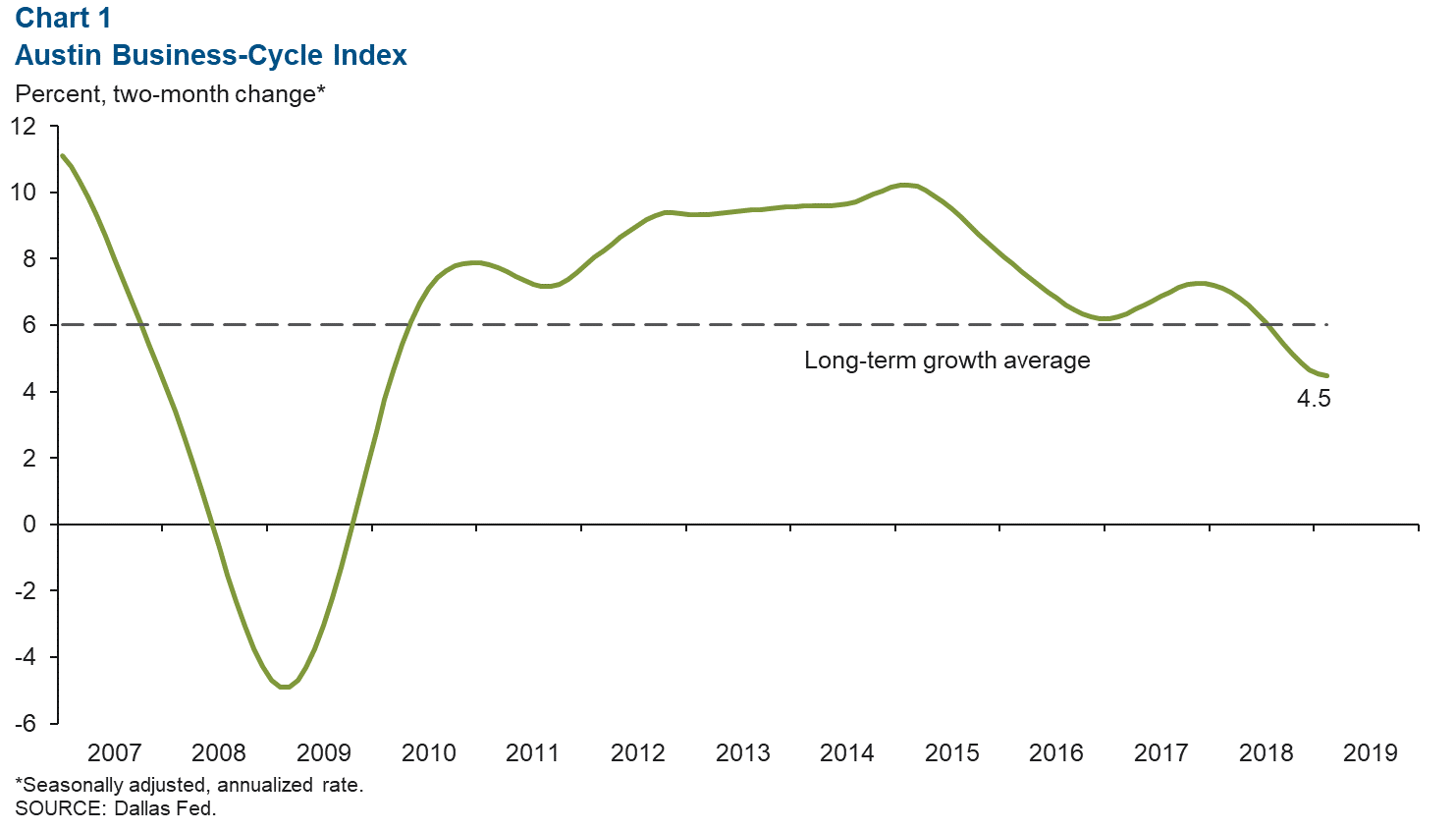
Labor Market
Unemployment Dips
Austin’s unemployment rate declined to 3.0 percent in February—well below Texas and U.S. rates of 3.8 percent (Chart 2).
The metro’s labor force expanded at a strong annualized rate of 3.6 percent in February, a major pickup from January’s -0.6 percent and slightly above its long-term trend of 3.3 percent.
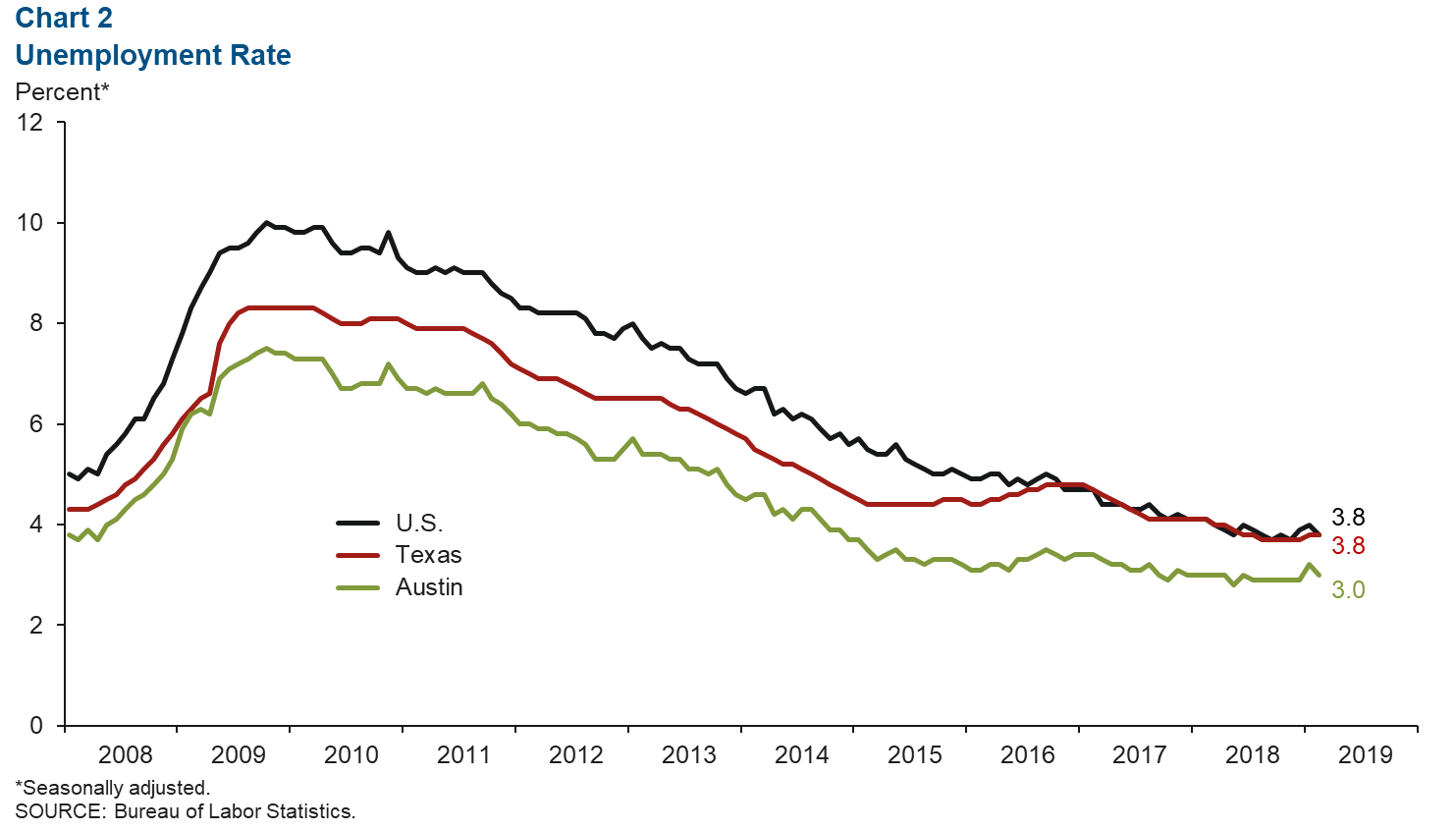
Employment Growth Steady
After growing 2.4 percent in 2018, Austin employment expanded at an annualized rate of 2.3 percent during the three months ending in February (Chart 3).
Growth was led by the financial activities industry, which surged at an annualized rate of 11.9 percent, or a net of 1,800 jobs. Professional and business services (up a net 2,200 jobs) and government (up almost 1,600), which collectively account for one-third of Austin’s jobs, also saw healthy growth.
An area of weakness was health and education services, which shed approximately 1,500 jobs within the three-month period.
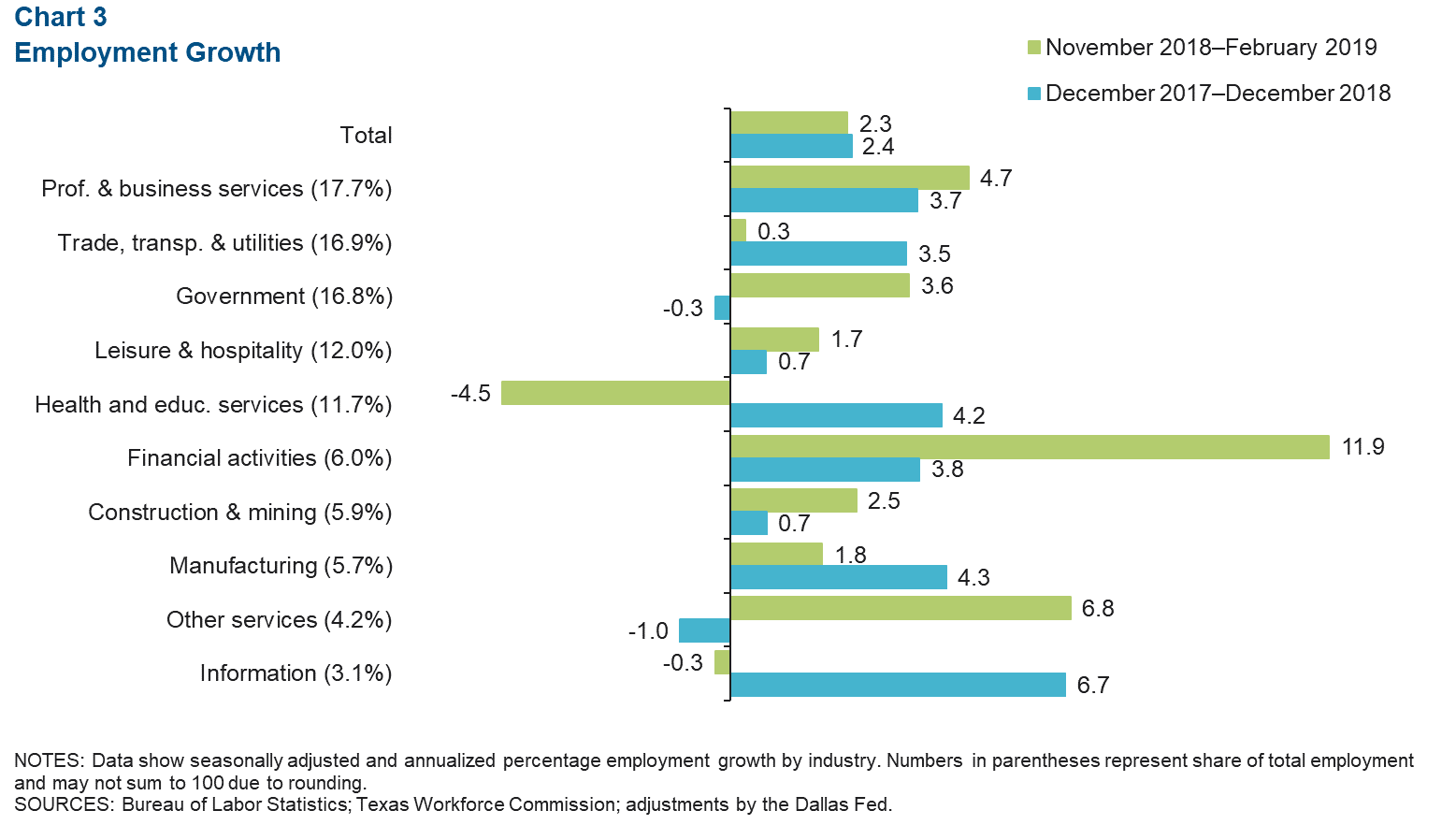
Hourly Wages Decline
Austin’s three-month moving average for private sector hourly wages ticked down slightly in February, though it remained above the Texas and U.S. averages (Chart 4).
Year over year, Austin wages grew a sluggish 0.5 percent, below the nation’s 3.4 percent and state’s 2.9 percent increases.
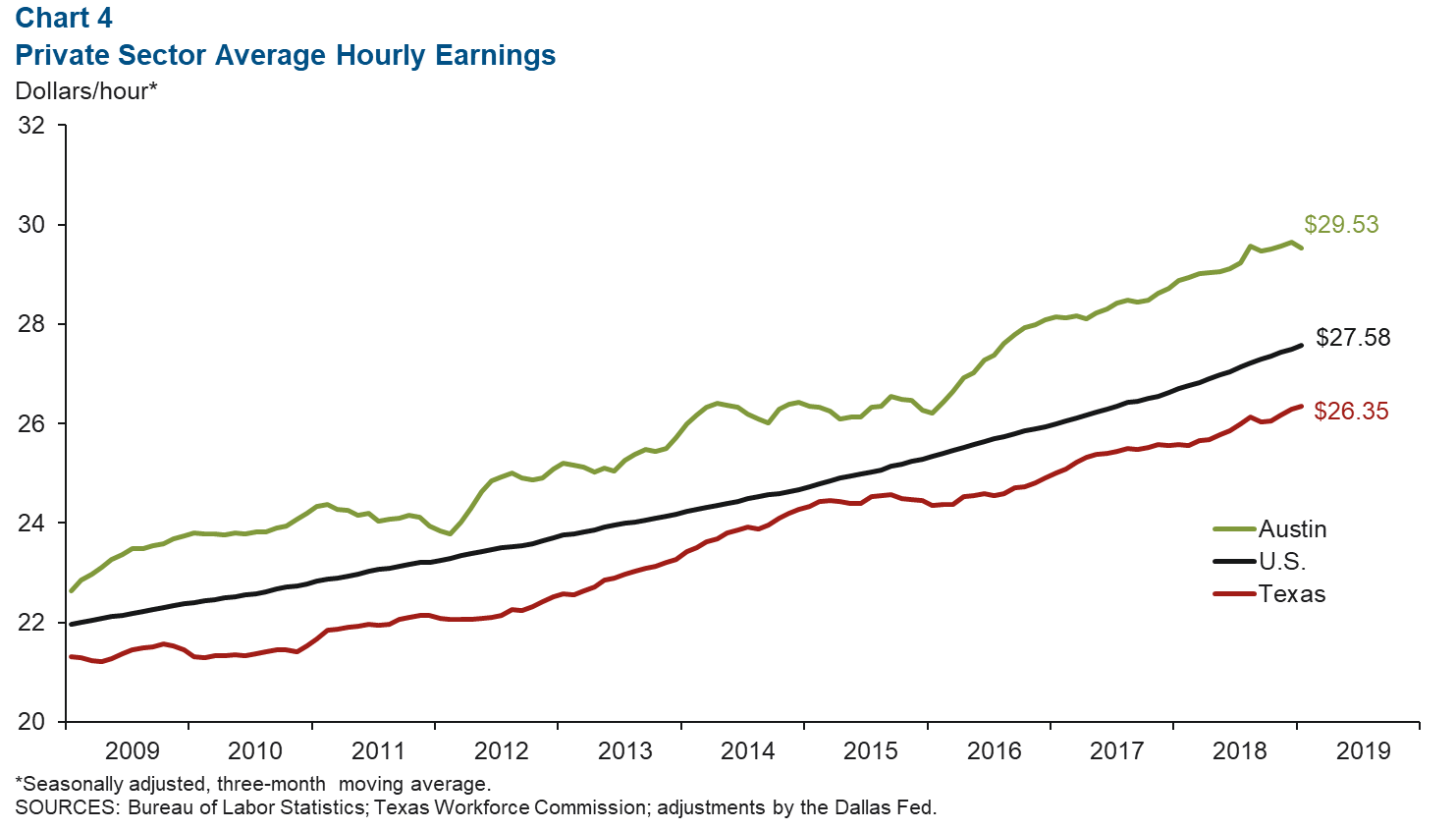
Real Estate
Median Home Price Decreases, Sales Rise
The median home price in Austin decreased in February to $301,418, down 1 percent year over year, whereas the median home price for Texas increased 1.1 percent to $236,112 (Chart 5).
The housing market remained active as existing-home sales in the metro increased 7.1 percent from January to February and 4.1 percent year over year.
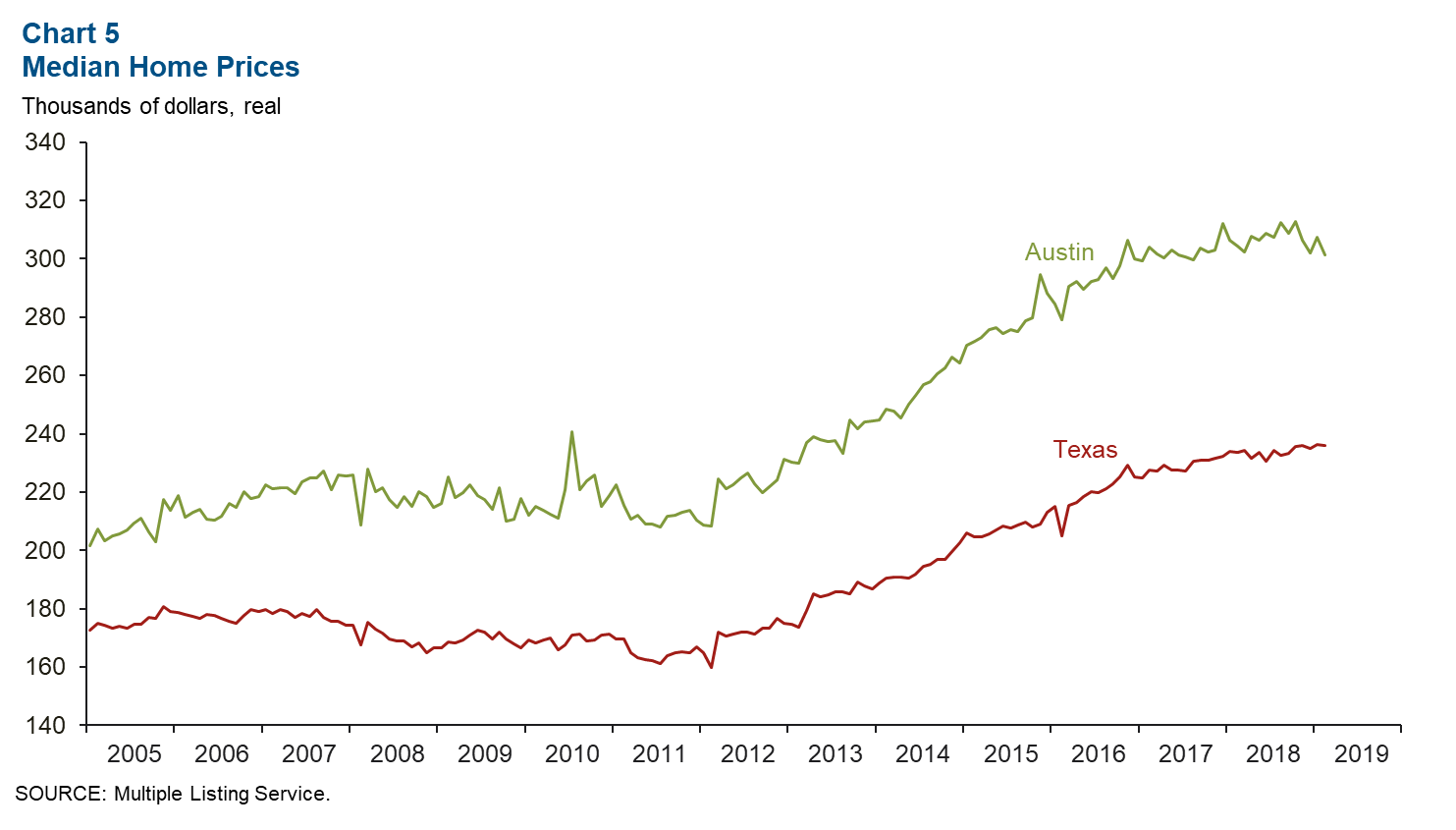
Home Affordability Little Changed
Housing affordability, defined as the percentage of homes sold that the median-income household can afford, remained relatively unchanged at the metro and national levels from the third to fourth quarter of 2018 (Chart 6).
Austin’s affordability index fell from 54.5 to 54.3, while the national index increased from 56.4 to 56.6. Generally speaking, housing affordability in major metros of Texas has been on the decline since the first quarter of 2013.
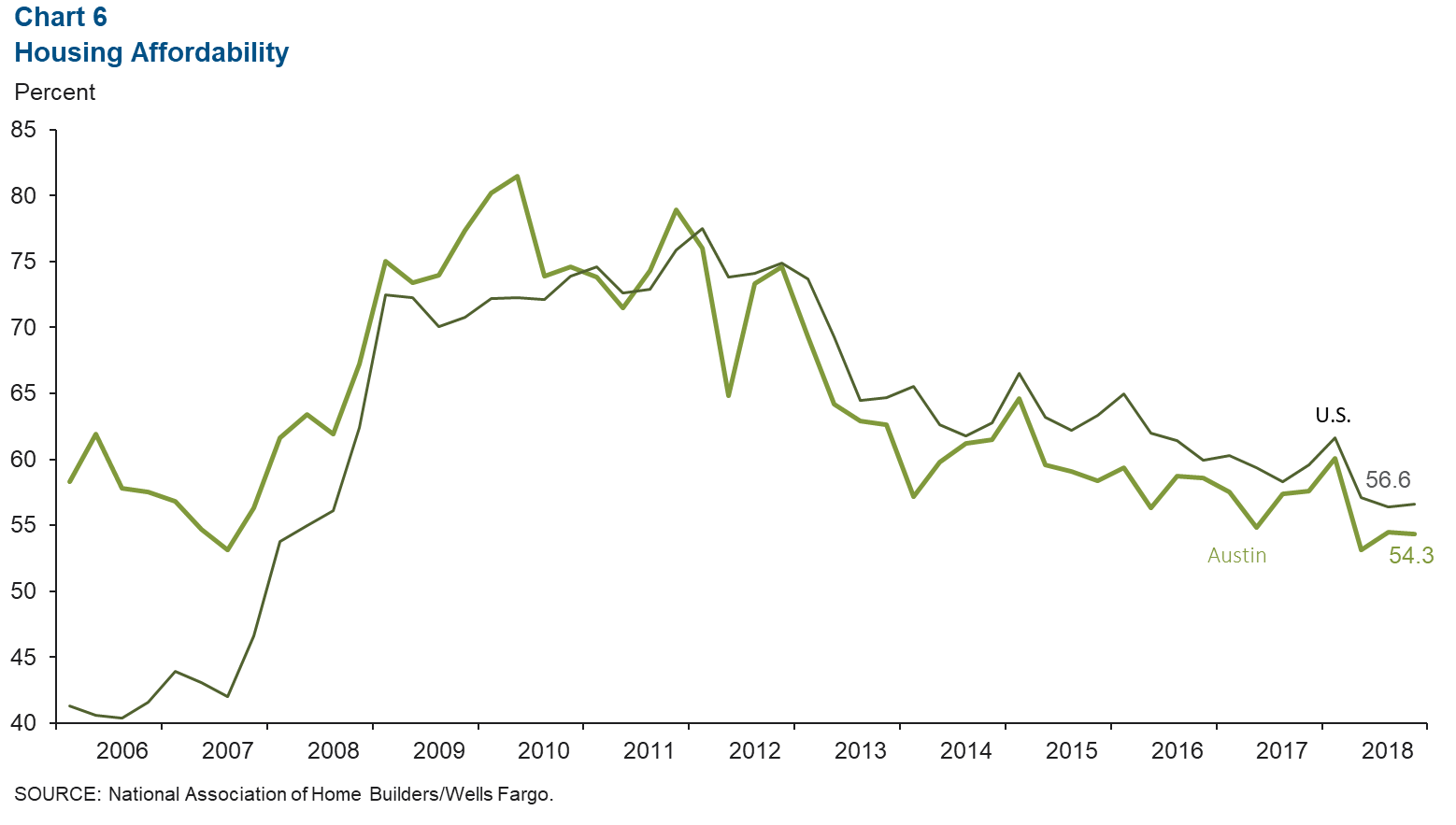
NOTE: Data may not match previously published numbers due to revisions.
[divide icon_position=”left” width=”short” color=”#”]
Source: Federal Reserve Bank of Dallas
Questions can be addressed to Judy Teng at judy.teng@dal.frb.org. Austin Economic Indicators is released on the first Thursday of every month.






